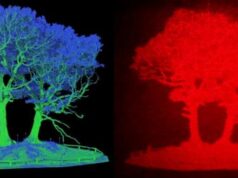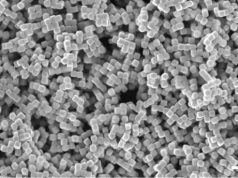The locations of abandoned wells studied in western Pennsylvania. Credit: Princeton University
Abandoned oil and gas wells are a significant source of greenhouse gases but there are so many scattered across the United States that stopping the leaks presents a huge cost for states. Now, a research team including scientists from Princeton and Stanford universities, has identified specific well attributes that will allow governments to prioritize their repairs. The researchers say it should be possible to eliminate the majority of emissions while minimizing costs by leaving non-emitting abandoned wells alone.
“The most effective solution focuses on the highest-emitting wells,” said Michael A. Celia, Theodora Shelton Pitney Professor of Environmental Studies and Professor of Civil and Environmental Engineering at Princeton University. “Using our findings, states can apply their resources where it will make the greatest difference.”
The researchers focused on abandoned wells in western Pennsylvania, because the state has the longest history of oil and gas operations in the United States, but they said their findings may apply to wells across the country. The research shows that the number of wells tracked by regulators most likely is far lower than the true number of abandoned wells, some of which date back to the 1800’s. Pennsylvania’s Department of Environmental Protection, for example, has records for 31,676 abandoned wells (as of October 2015), while the researchers estimate that the actual number ranges from 470,000 wells to 750,000 wells.
In previous work, the Princeton researchers found that many abandoned wells emit methane, a powerful greenhouse gas. They found that in Pennsylvania, methane escaping from abandoned wells made up 4 to 7 percent of state greenhouse gas emissions, which is similar to the new estimate of 5 to 8 percent found in this study. They also found that a small minority of wells tended to emit the large majority of gas. This observation motivated the most recent work, where the group looked for specific attributes that characterize these high-emitters.
Find your dream job in the space industry. Check our Space Job Board »
High emitters represent only about 10 percent of all wells but produce about 90 percent of emissions, according to a 2014 report published by a team including several of the researchers on the current paper and confirmed again in this paper.
“We wanted to know what caused the high emissions, and if the data could help prioritize wells for remediation,” said Mary Kang, the paper’s lead author who worked with Celia and Mauzerall as a doctoral student at Princeton and is now a postdoctoral researcher at Stanford. “In addition to chemical markers, our samples and database analysis showed that physical traits can tell a lot about the wells.”
In a paper published online on Nov. 14 in the Proceedings of the National Academy of Sciences, the researchers from Princeton, Stanford, Ohio State and Lawrence Berkeley National Laboratory found that two characteristics pointed to high emissions: gas wells that were unplugged, and gas wells in coal regions that were plugged but vented (venting is a safety measure for old wells operated in areas containing coal). Going forward, the researchers said that states with gas drilling should consider alternative safety measures for wells located in coal regions. Neither type of high-emitting wells seems linked to proximity to underground natural gas storage areas or to unconventional oil and gas production, the researchers found.
“Our goal in this work was to identify well characteristics that would help identify high emitters and thus provide an opportunity to target them for mitigation and avoid the cost of plugging abandoned wells with low or no emissions” said Denise Mauzerall, professor of civil and environmental engineering and of public and international affairs at Princeton. “Our identification of key characteristics of high emitters will help locate and target for mitigation abandoned wells responsible for the majority of emissions. We hope this approach can be used across the United States and abroad to identify high emitters and target them for remediation.”
Source:Princeton University
Research Reference:
Identification and characterization of high methane-emitting abandoned oil and gas wells, PNAS, www.pnas.org/cgi/doi/10.1073/pnas.1605913113











